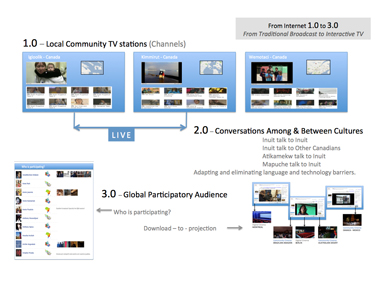From the Editor: Taxonomy
Taxonomy in Relation to the Inuit Dog
Steve’s Solo Journey
In the News
Far Fur Country Progress Report
Digital Indigenous Democracy Comes to the Canadian North
Media Review: Nuliajuk: Mother of the Sea Beasts
New Printing of Inuit Dog Thesis
Navigating This Site
Index of articles by subject
Index of back issues by volume number
Search The Fan Hitch
Articles to download and print
Ordering Ken MacRury's Thesis
Our comprehensive list of resources
Defining the Inuit Dog
Talk to The Fan Hitch
The Fan Hitch home page
Editor: Sue Hamilton
Webmaster: Mark Hamilton
The Fan Hitch, Journal
of the Inuit Sled Dog, is published four
times a year. It is available at no cost
online at: https://thefanhitch.org.
The Fan Hitch welcomes your letters, stories, comments and suggestions. The editorial staff reserves the right to edit submissions used for publication.
Contents of The Fan Hitch are protected by international copyright laws. No photo, drawing or text may be reproduced in any form without written consent. Webmasters please note: written consent is necessary before linking this site to yours! Please forward requests to Sue Hamilton, 55 Town Line Rd., Harwinton, Connecticut 06791, USA or mail@thefanhitch.org.
This site is dedicated to the Inuit Dog as well as related Inuit culture and traditions. It is also home to The Fan Hitch, Journal of the Inuit Sled Dog.
The Fan Hitch welcomes your letters, stories, comments and suggestions. The editorial staff reserves the right to edit submissions used for publication.
Contents of The Fan Hitch are protected by international copyright laws. No photo, drawing or text may be reproduced in any form without written consent. Webmasters please note: written consent is necessary before linking this site to yours! Please forward requests to Sue Hamilton, 55 Town Line Rd., Harwinton, Connecticut 06791, USA or mail@thefanhitch.org.
This site is dedicated to the Inuit Dog as well as related Inuit culture and traditions. It is also home to The Fan Hitch, Journal of the Inuit Sled Dog.
Zacharias Kunuk and Norman Cohn have a new project named Digital Indigenous Democracy (DID). Working through the IsumaTV arm of the film company they co-founded with two others in 1990 they are bringing northern communities a high speed/high bandwidth local network that incorporates many of the advantages and features of high speed internet service in a manner that also supports the continuation of indigenous culture and the use of the native language, Inuktitut.
Internet access is limited in most northern communities. Its cost per kilobyte is high and the bandwidth is low. Kunuk states, “Internet service in remote communities in Canada’s North is at least 100 times behind what you’ve got in Toronto, in cost per kilobyte, and that’s going to get worse, not better. It may be 200 times worse next year, and that’s fatal.” Kunuk's "fatal" assessment is based on the collision between Inuktitut, historically an oral language, with low bandwidth internet access which forces northern users to use text communications. The fatalities Kunuk foresees are to Inuit culture and Inuktitut.
DID's solution is to install a low-cost local server/media player as well as an Open Mesh wireless network in the communities. This equipment provides high-speed use of IsumaTV's interactive multimedia tools (upload, download, mobile applications and networking) and internet-enabled local television channels to these communities.

The complete 5,000 title
IsumaTV library of programs resides on each
DID server/media player and playlist choices as well as all other programing
decisions for the community are left to local control. IsumaTV's catalogue
overwhelmingly features both northern lifestyle and language programs,
the two areas of northern culture Kunuk and Cohn seek to reinforce.
Image courtesy IsumaTV
DID server/media player and playlist choices as well as all other programing
decisions for the community are left to local control. IsumaTV's catalogue
overwhelmingly features both northern lifestyle and language programs,
the two areas of northern culture Kunuk and Cohn seek to reinforce.
Image courtesy IsumaTV
Their pilot program has "wired" Igloolik, Cambridge Bay, Taloyoak, Arviat and Iqaluit. The first four also have IsumaTV local cable channels fed to residents' home televisions via the internet with Iqaluit soon to follow. DID hopes to add three or four additional communities during the warm months this year.
In addition, local videographers and budding filmmakers in the communities can upload their works to their community's local DID server/media player where those works can become part of the community's playlist. These works are subsequently distributed to the servers in all the other communities as well as included in the IsumaTV catalogue.
Kunuk and Cohn also foresee DID augmenting and facilitating inter community participation in the decision making process for larger resources development projects. Kunuk presented 71 Isuma call-in radio shows and video interviews at the hearings in 2012 on the then-proposed Baffinland iron mine at Mary River. The license subsequently issued to the project required additional multimedia consultation over the course of the project's duration.
